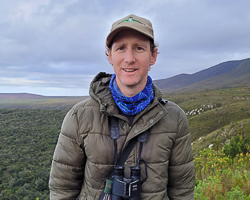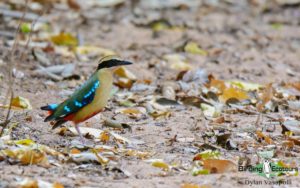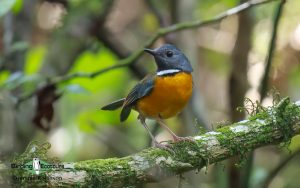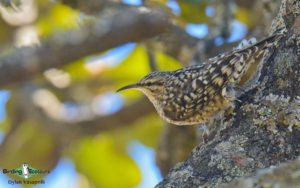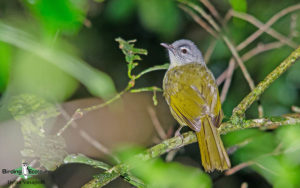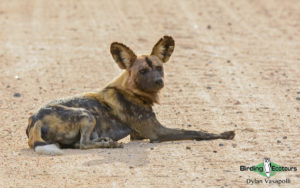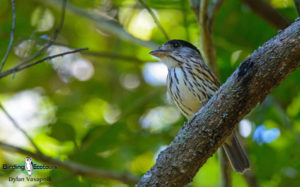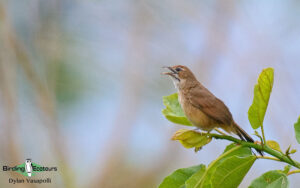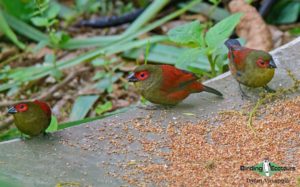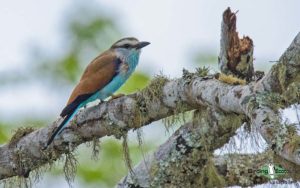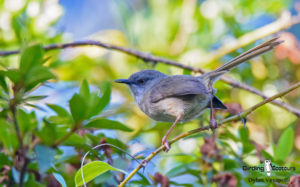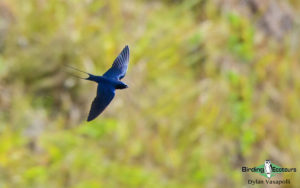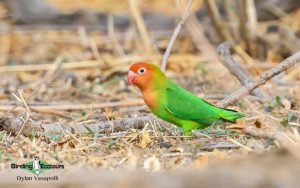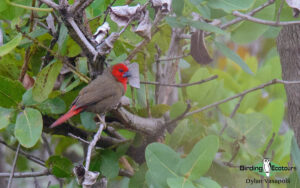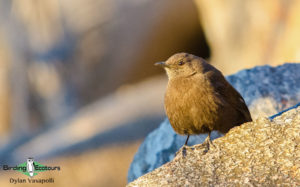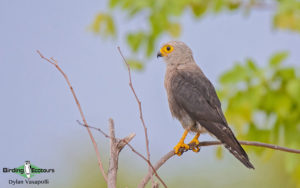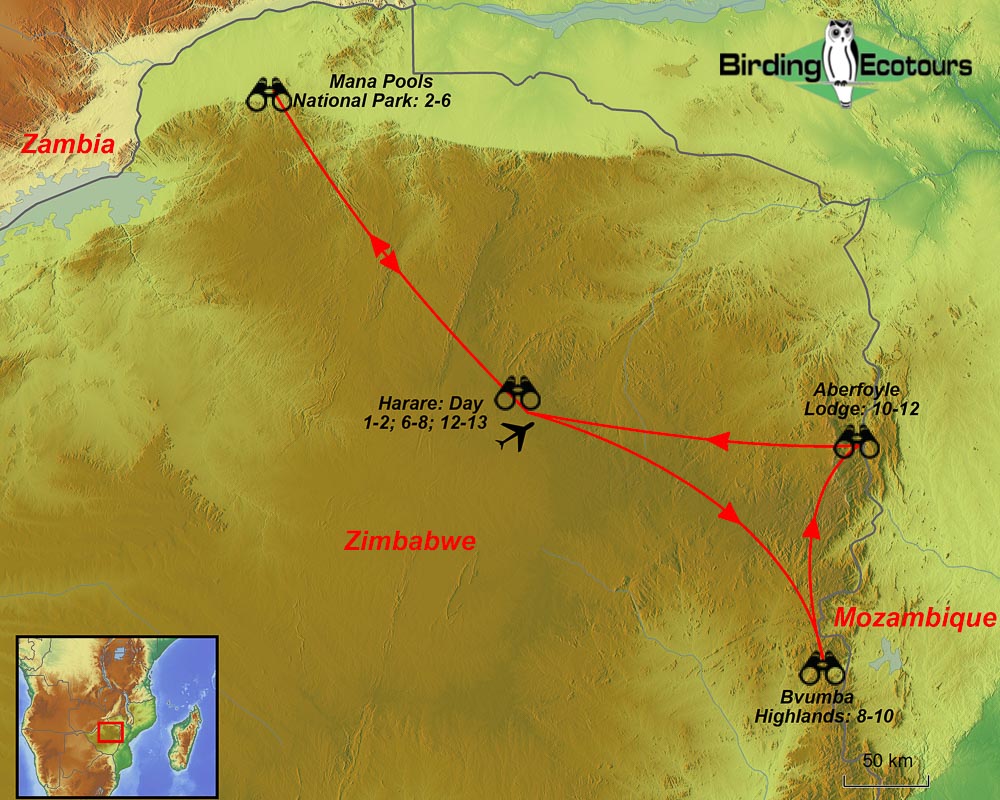Zimbabwe Birding Tour: African Pitta, Miombo Woodlands and Eastern Highlands
Go to: Zimbabwe Birding Tours | Birding Tours in Africa | All our birding tours
Zimbabwe Birding Tour: African Pitta, Miombo Woodlands and Eastern Highlands
November 2024/2025
Zimbabwe is an absolutely fabulous country – scenically wonderful, with very friendly people fluent in English and a long history in wilderness conservation. This has led to the establishment of a number of excellent and highly biodiverse reserves and national parks throughout the country. Zimbabwe has a good road network, and it also holds the distinction of being one of the few African countries in which you can see a great deal without the use of a 4×4 vehicle. With an improving political leadership and the introduction of US Dollars as tender throughout the country, Zimbabwe is once again becoming a very popular destination for birders and travelers alike.
This tour starts in the country’s capital city, Harare, before we soon transition to the famous Mana Pools National Park, a lush reserve at the bottom of the breathtaking Zambezi River Valley (here, the Middle/Lower Zambezi, one of Africa’s biggest rivers, is bounded by steep and immense escarpments on either side) and full of excellent birds. Some of our early highlights are likely to include the highly desired African Pitta (for which this tour is specifically timed), the localized Lilian’s Lovebird and a wide spectrum of mammals. Indeed, Mana Pools is a famous predator viewing area, with high concentrations of Lion, Leopard and the rare African Wild Dog, all serving as a precursor to the wonders that await.
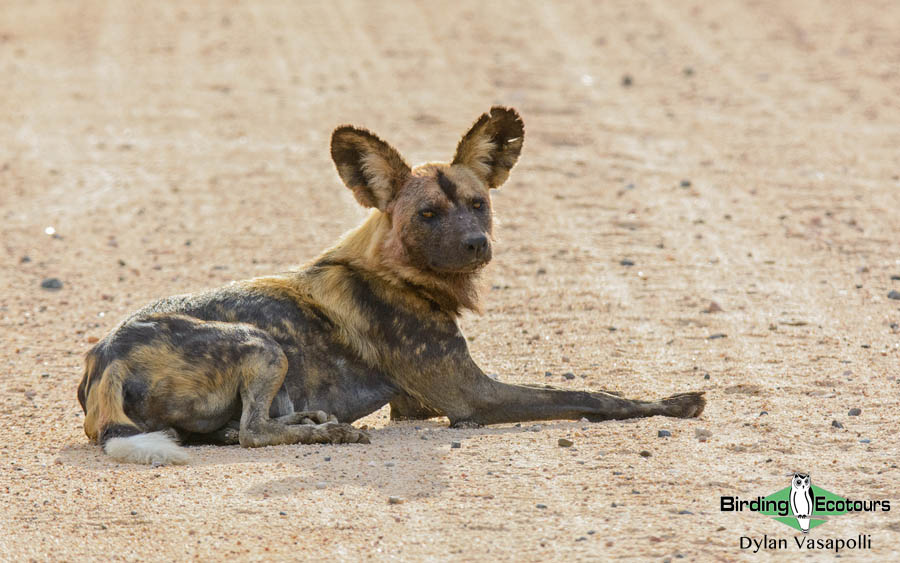
After a few days in magical Mana Pools, we make our way back south to Harare where we visit various miombo woodland birding areas around the city for the day – this is a unique south-central-African-restricted woodland that has a whole host of bird species restricted solely to this habitat and is of significant importance!
After a full day of Harare miombo birding, we transition to the spectacular Eastern Highlands for the next leg. The Eastern Highlands’ evergreen forests hold some highly localized endemics such as Chirinda Apalis and Roberts’s Warbler, as well as several birds that are more easily found here than in other countries, such as Swynnerton’s Robin. We also bird mountain grasslands for the Vulnerable (IUCN) Blue Swallow, this area being one of the last remaining strongholds for this scarce, rapidly declining species.
After four nights in Zimbabwe’s lush Eastern Highlands, we make our way back to Harare (birding our way back, of course) where the tour ends after a final night in the capital city. This exciting Zimbabwe birding tour gives you the opportunity to find the near-mythical African Pitta while also taking in some highly range-restricted specials, along with some truly spectacular megafauna highlights too.
This Zimbabwe birding tour incorporates four nights in an all-inclusive, private lodge in Mana Pools National Park, which is one of Africa’s great wildlife havens. Mana Pools has proven to be one of the most reliable locations for finding the most-wanted African Pitta, around which this tour is designed.
For those who would like to target several range-restricted and tricky-to-find Mozambique specials, you can join our Mozambique Birding Tour: Crab-plover and Lowland Forests which immediately follows this Zimbabwe bird watching tour. On this trip we spend time in the lowland forests of central Mozambique looking for White-chested Alethe, East Coast Akalat, Chestnut-fronted Helmetshrike and other desirable specials. We then move south to the coast where we search for Crab-plover, Saunders’s Tern and many other coastal birds.
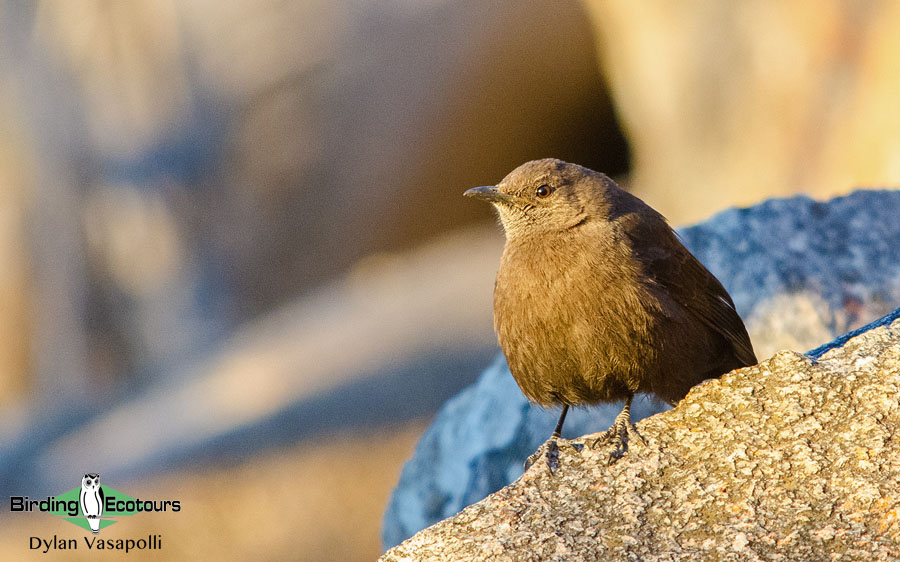
Itinerary (13 days/12 nights)
Day 1. Arrival in Harare
Our international flights arrive in Zimbabwe’s capital, Harare, (usually by midday), and we transfer to our comfortable guest house within this city’s suburbs, where we spend the first night. The gardens sometimes host Variable Sunbirds, barbets and other dazzling species. If this is your first trip to Africa, prepare to be swamped with new birds, many of them brightly colored. In the afternoon, time permitting, we will try to track down the prized Boulder Chat just outside of Harare. Here, we will get our first taste of miombo birding, which is likely to produce Miombo Rock Thrush, Southern Hyliota, Red-faced Crombec and Eastern Miombo Sunbird. More widespread species also occur around here, and are likely to include Southern Yellow White-eye and Tropical Boubou.
Overnight: Harare
Days 2 – 5. Mana Pools National Park
Today, we will have a long transfer (roughly five hours of travel time) to reach our next destination of the trip – Mana Pools National Park, and thus we will be keen to get going early. While the trip to Mana Pools will likely be uneventful, stops en-route, such as around Lion’s Den, may provide us with species such as Black-chested Snake Eagle, Red-faced Cisticola, Copper Sunbird and the highly prized Racket-tailed Roller. Eventually, we will descend sharply into the verdant Zambezi Valley, and proceed onwards to our comfortable and well-appointed exclusive lodge, in time for our late afternoon birding.
At this time of the year, the area regularly has good numbers of displaying African Pittas and from our first afternoon, we will be on the lookout for these mythical and most-wanted intra-African migrants. Four nights and three full days in Mana Pools will give us excellent chances of finding pittas while also giving us ample time to enjoy the area’s rich birdlife, not to mention the impressive numbers of megafauna in the area.
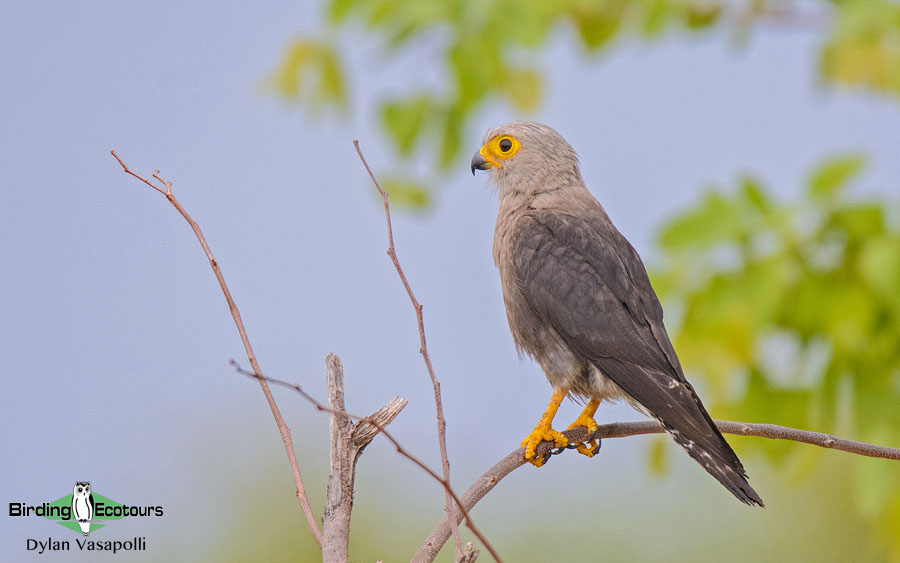
Mana Pools is another of Africa’s great game parks, and it is one of the continent’s premier wildlife-viewing areas! Like their mammal counterparts, the birdlife within the area is nothing short of outstanding – with an incredibly diverse array of species, including some very special birds, all awaiting us! We will spend four nights in the area, and our time will be taken up with a mix of birding/wildlife drives as we navigate through the area. We will also undertake short walks through the wilderness – mostly in our pursuit of African Pitta. Our focus will be on the birds and mammals alike in this area, and we find that the two work in perfect harmony with each other. A wide range of habitat is covered, from mixed bushveld on rocky slopes covered in baobab trees, sections of tall, gallery mopane woodland, through to dense riverine thickets, dry riverbeds, and large areas of open riverine woodland, with scattered pans and wetlands dotted throughout the region. The mighty Zambezi River flows through the park and is the primary reason for the incredible diversity here.
Although the bird species occurring here are too many to mention, we will focus our efforts on the following ‘specials’. The range of mixed woodlands, bushveld and baobab-dominated areas host one of our core targets, Lilian’s Lovebird, along with the likes of both Mottled and Böhm’s Spinetails, Bennett’s Woodpecker, Dickinson’s Kestrel, Meyer’s Parrot, Retz’s Helmetshrike, Mosque Swallow and Orange-winged Pytilia. Many raptors nest within these areas, and we should keep our eyes open as African Harrier-Hawk, Hooded and White-backed Vulture, Brown Snake Eagle, Bateleur, Martial and Tawny Eagles, African Hawk-Eagle, Lizard Buzzard, Dark Chanting Goshawk and Shikra, are all likely. We will search areas of mopane woodland for the scarce Arnot’s Chat and if we’re lucky, Racket-tailed Roller.
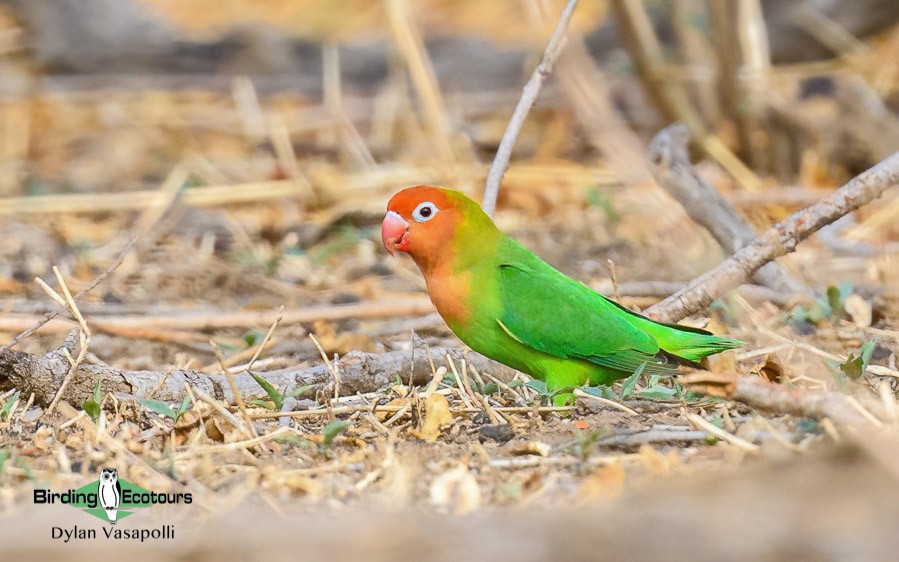
The denser thickets, often lining some of the smaller streams and dry riverbeds, will be searched for many denizens, most importantly African Pitta, along with the likes of Crested Guineafowl, Narina Trogon, Eastern Nicator, the localized Livingstone’s Flycatcher, Purple-banded Sunbird and Red-throated Twinspot, amongst others.
A day trip from our lodge to visit the many wetlands and pans, along with the Zambezi River itself, should produce a wide array of waterbirds, and we’re sure to find a number of ducks, plovers, storks, herons and egrets here. Some of the more important species we’ll be targeting include Long-toed and White-crowned Lapwings, Greater Painted-snipe, Collared Pratincole, Saddle-billed Stork and Goliath Heron. Western Banded Snake Eagle can often be found in the trees surrounding these water bodies, and we may also stumble upon the highly prized Pel’s Fishing Owl if we’re very lucky. Nocturnal birding can also be rewarding here, and the bulk of our focus will be on finding the scarce Three-banded Courser. Other species such as African Barred Owlet, Verreaux’s Eagle-Owl and African Wood Owl are usually around, along with Fiery-necked Nightjar and even the spectacular Pennant-winged Nightjar.
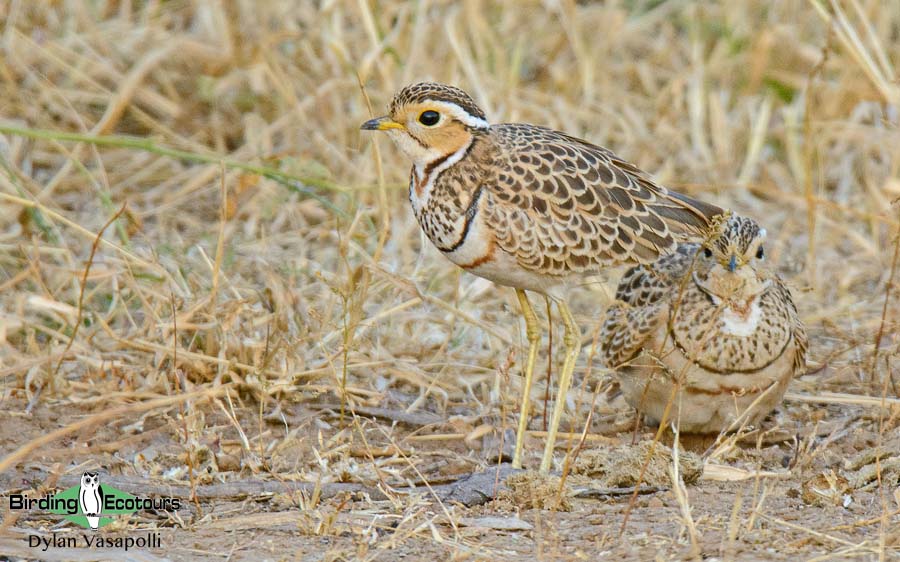
Mana Pools is famous for its vast numbers of African Elephants and its predator sightings, in particular African Wild Dog, with several packs of this rare and highly prized predator occurring throughout the park. Additionally, Lion and Leopard are regularly seen. Some of the other mammals we are likely to see here include African Buffalo, Greater Kudu, Eland, Waterbuck, Plains Zebra and Hippopotamus. We also have a chance of seeing some of the more nocturnally active mammals found here such as African Civet, Side-striped Jackal, Spotted Hyena and Honey Badger.
Overnight: Mhara River Camp, Mana Pools
Day 6. Mana Pools to Harare
We have a full final morning available to explore the area, granting us the opportunity to search for any of the birds and mammals mentioned above (Days 2 – 5), that we may not have seen yet. Eventually, we will need to depart this incredible wildlife park, and make the trip back to Harare (roughly five hours). En-route we will likely stop off again in the Lion’s Den area where we can look for Marsh Owl, Croaking Cisticola, Bat Hawk and several other exciting species. We will then likely arrive in the late afternoon, and will settle in for our evening meal together, with the exciting prospect of a full day of miombo birding the following day!
Overnight: Harare
Day 7. Birding Harare
Harare is a birdy city, with the lush gardens and woodlands allowing birdlife to thrive. Additionally, the city and some of the surrounding areas on the Mashonaland Plateau host some of the finest tracts of the unique miombo woodland in the country. Dominated by Brachystegia trees, covered in lichen and moss, this woodland hosts several species virtually confined to these patches. We have a full day at our disposal to explore some of the birding sites in and around Harare, specifically targeting the miombo specials. Birding in the miombo can be tough going, with the birds often confined to ‘bird parties’ – where groups of birds gather, forage and feed together, slowly moving through the woodland. With enough time, we are bound to come across a few of these ‘bird parties’. Species such as White-crested Helmetshrike and Green-capped Eremomela are often the first birds to be found, before the trees come alive with other species. Some of our primary targets will be species such as Southern Hyliota, White-breasted Cuckooshrike, Green-backed Honeybird, Red-faced Crombec, Miombo Tit, Grey Penduline Tit, Stierling’s Wren-Warbler and Cabanis’s Bunting. Harare is a great place to see Whyte’s Barbet, and we will hopefully come across this prized barbet during our stay.
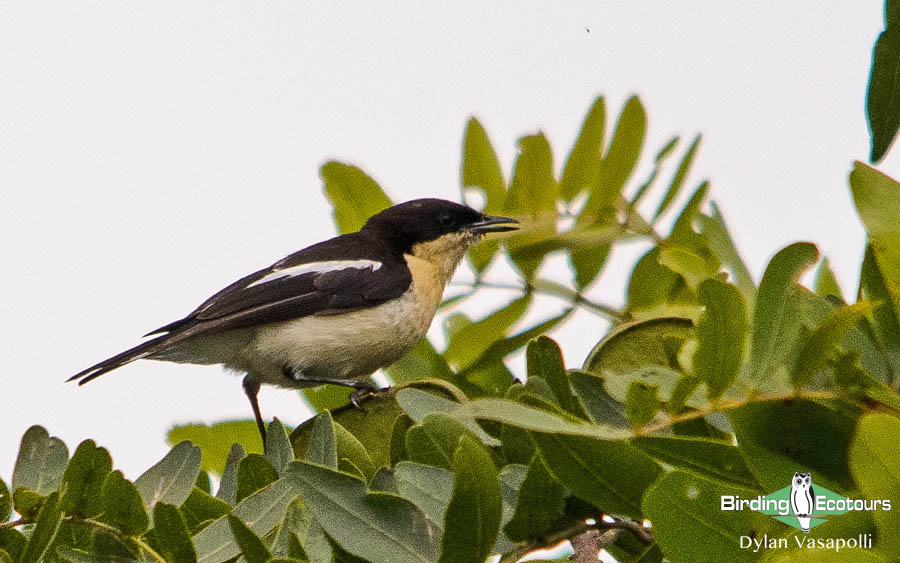
Harare is also famous for the excellent tropical wetland birding it hosts – however, this is only during the rainy summer season (Jan – Mar), and the majority of the wetlands will be dry at this time of the year. Despite this, we may still find residents such as Marsh Owl, Senegal Coucal, African Yellow Warbler, a trio of longclaws, Cape, Yellow-throated and the prized Rosy-throated Longclaws, Orange-breasted Waxbill and Yellow-mantled Widowbird.
Overnight: Harare
Day 8. Transfer to Bvumba Mountains, woodland birding en route
Today, we plan to leave early and embark on a half-day drive to the Eastern Highlands of Zimbabwe near the border with Mozambique, and then upwards to the mid altitudes of the Bvumba Mountains. We have a fair distance to cover today, but en-route we’ll be sure to spend some time birding around Gosho Park, just east of Marondera, for any miombo birds we might have missed near Harare. Gosho Park is another fantastic site, and it allows us our best chances for some species such as African Spotted Creeper, Whyte’s Barbet, Miombo Rock Thrush, Miombo Tit, Wood Pipit, Western Violet-backed Sunbird and Black-eared Seedeater. Time-dependent, we may also bird some woodlands near Mutare for the uncommon and range-restricted Cinnamon-breasted Tit.
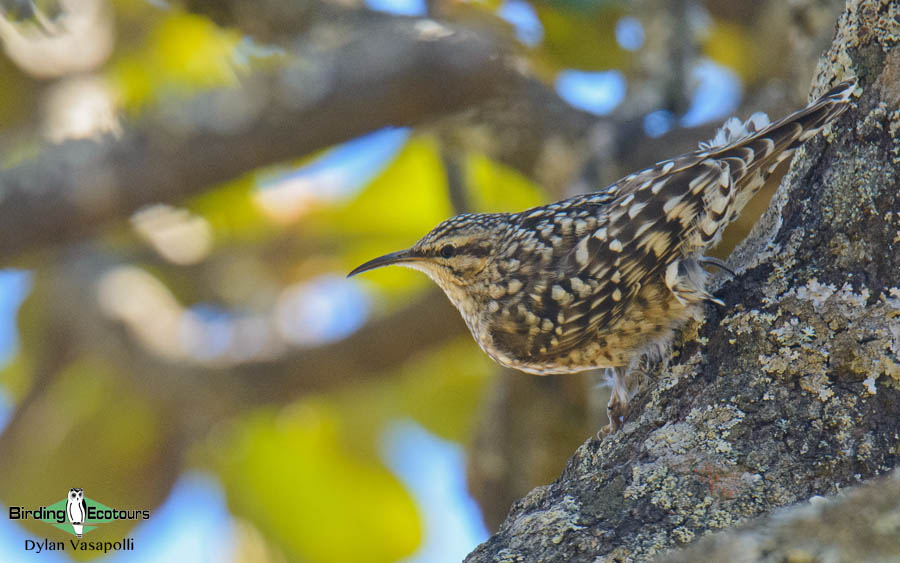
Eventually, we reach the lush Bvumba Highlands where we will stay at the rustic yet charming Seldomseen Cottages, set right within some of the best montane forest in the region. Here, almost all of the Eastern Highlands’ forest species occur right on our doorstep! We will spend two nights here, birding the lush grounds and their surrounds. We will likely spend the afternoon exploring the Seldomseen grounds and familiarizing ourselves with some of the specials occurring in the area. Common and vocal species we’re likely to see include some of the area’s prized birds, such as Chirinda Apalis, Roberts’s Warbler and Stripe-cheeked Greenbul, while other more widespread species such as Cape Batis, Olive Bushshrike, Cape Robin-Chat, African Dusky Flycatcher, Olive Thrush and Olive Sunbird abound in the grounds.
Overnight: Seldomseen Cottages, Bvumba Highlands
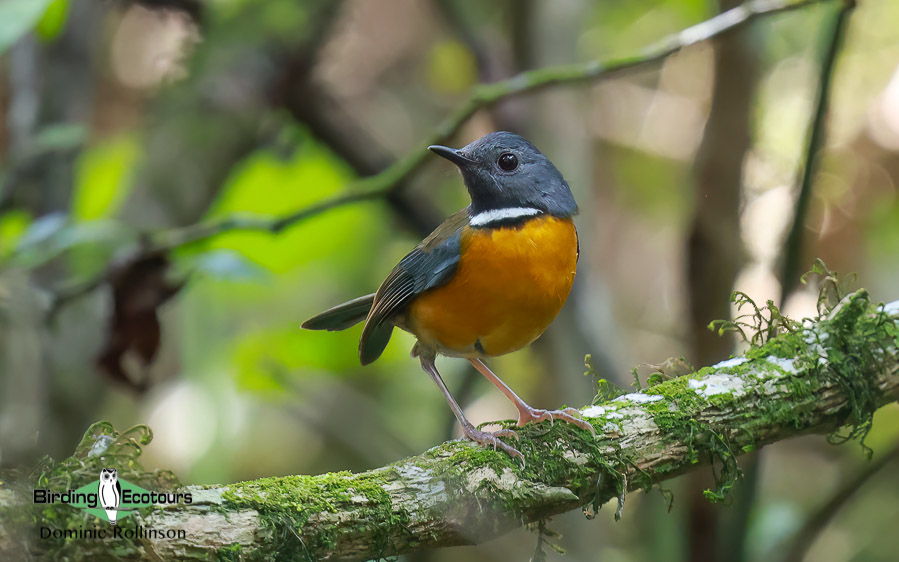
Day 9. Continued birding in the Bvumba Highlands
We have the full day to explore this area to try and find all its many special birds. The Eastern Highlands also host some excellent miombo woodlands, and we will be sure to include some time in these during our stay. These woodlands are the primary range for the scarce Cinnamon-breasted Tit, and this species will likely be our main target. Of course, these woodlands support the full array of miombo specials, and if we missed any species such as African Spotted Creeper, Cabanis’s Bunting, Whyte’s Barbet, Red-faced Crombec, Miombo Rock Thrush and Miombo Tit, we will be able to try again for these species. We may also be lucky and find one of the ‘regular’ Collared Flycatchers here (this is a rare migrant to southern Africa), while the grassy slopes are good for the scarce Tree Pipit.
We will need to put more time into the forested areas, as they host the bulk of the specials, and the very localized Swynnerton’s Robin will be one of our main targets. Noisy Livingstone’s Turacos bound in the treetops, while secretive Eastern Bronze-naped Pigeons call from high up within deep cover, with dainty White-tailed Crested Flycatchers never far away. The understory, however, is often of more importance, supporting the likes of Orange Ground Thrush, Barratt’s Warbler, White-starred Robin, Green Twinspot and the ultra-secretive Buff-spotted Flufftail, this being one of the best areas to see the latter! Black-fronted Bushshrikes keep to the thicker tangles, while species such as Yellow-rumped Tinkerbirds aren’t shy to show themselves, with Lemon and Tambourine Doves exploding from the forest floor. The open areas play host to species such as Cape Grassbird, African Yellow Warbler, Singing Cisticola and the cute Yellow-bellied Waxbill, while some of the protea-clad hills and flowering trees support a wealth of nectar-loving species, such as Bronzy Sunbird and if we’re lucky, Gurney’s Sugarbird. Raptors abound in this area, and we’ll be sure to keep our eyes out for Crowned and Long-crested Eagles, along with Augur Buzzard, while the smaller African Goshawk and Black Sparrowhawk are never far away from forested areas.
Overnight: Seldomseen Cottages, Bvumba Highlands
Day 10. Transfer to Aberfoyle Lodge, woodland birding en route
We will have one final morning to perhaps target any missing forest specials before we make our way north to the Honde Valley and Aberfoyle Lodge. One of our stops en route will see us calling into the incredible Nyanga Mountains where we will focus our attention on the scarce Blue Swallow – here at one of the last strongholds for this species. After making our way down along the winding Honde Valley road, we will eventually reach the comfortable Aberfoyle Lodge, where we will be based for two nights.
Overnight: Aberfoyle Lodge, Honde Valley
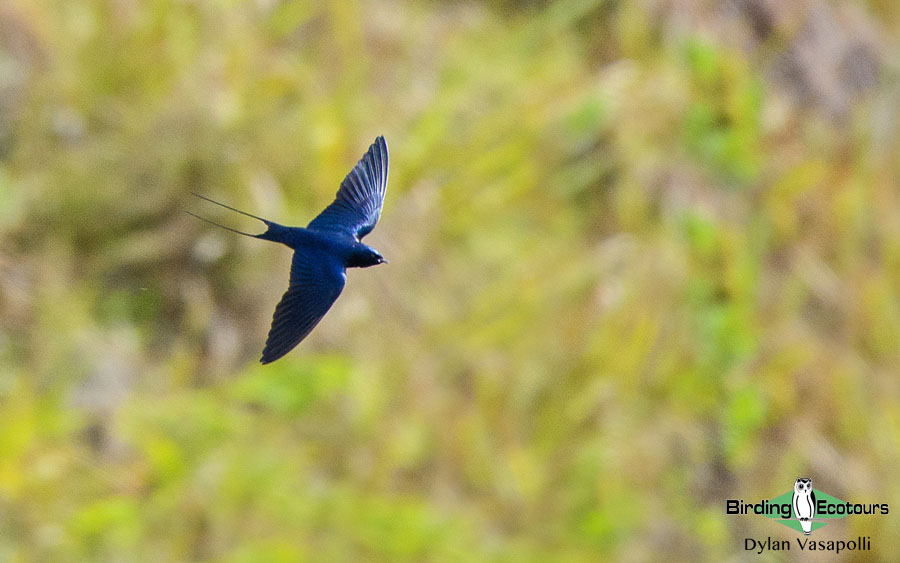
Day 11. Birding Aberfoyle Lodge and the Honde Valley
After our late afternoon arrival the previous day, this will be our first chance for birding this incredible area. We will spend the day visiting sites around the Honde Valley, such as the famous ‘Wamba Marsh’, Katiyo Tea Estate and the expansive grounds of the lodge itself. The Honde Valley is a scenic area with huge tea estates punctuated by villages, subsistence farmland and small patches of attractive riverine forest. The Mutarazi Falls can be seen in the distance as they plummet an impressive 2,500 feet (~760 meters) from the Nyanga Highlands which tower above this fertile valley. Feeders around the lodge attract some strikingly beautiful birds such as Red-throated Twinspot and Red-faced Crimsonwing, and nearby riverine forests are home to the scarce Pallid Honeyguide, Silvery-cheeked Hornbill, White-eared Barbet, African Broadbill, Common Square-tailed Drongo, and as always, many others. The rivers running through the area host Half-collared Kingfisher and Mountain Wagtail. Ayres’s Hawk-Eagle is often seen in the area, as is Palm-nut Vulture. Keeping an eye skywards might produce sightings of Scarce and Mottled Swifts, both of which have colonies in the area, and are a regular sight overhead. Lesser Seedcracker is the most sought-after bird here in the Honde Valley, and while we’ll allocate a good amount of time looking for it, this remains one of the toughest trip birds, and it’s certainly easy to miss.
Some of the outlying areas away from the lodge host other exciting species such as Blue-spotted Wood Dove, Green-backed Woodpecker, Moustached Grass Warbler, Fan-tailed Grassbird (Broad-tailed Warbler), Marsh Tchagra, Singing Cisticola, Grey Waxbill, Magpie Mannikin and Black-winged Red Bishop, amongst others. This is a very birdy area, and we are sure to see a high number of species as we traverse the valley.
Overnight: Aberfoyle Lodge, Honde Valley
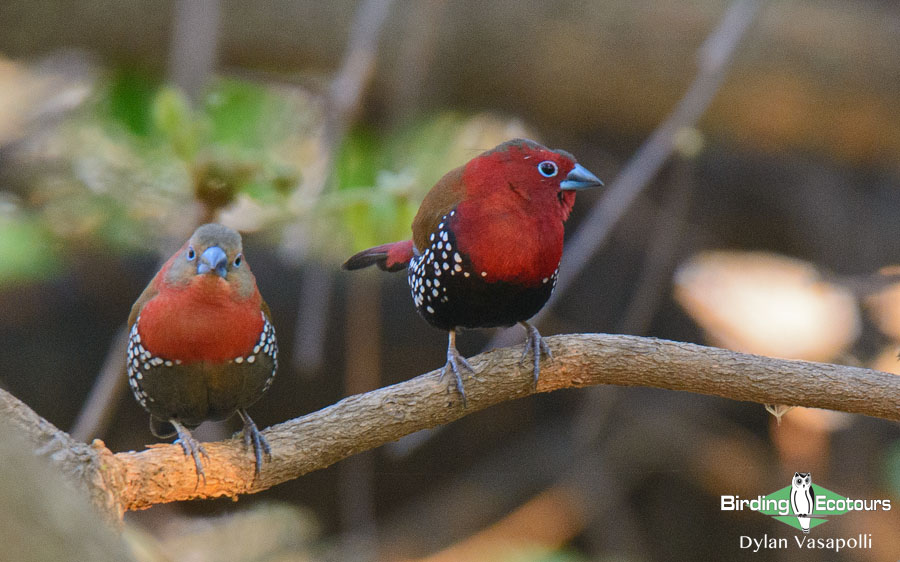
Day 12. Transfer from Honde Valley to Harare
We will have a final morning’s birding in the Honde Valley, perhaps having another search for the rare Lesser Seedcracker, before moving back westwards towards Harare. Today is mostly a transfer day; however, we can also use it as a backup day to look for any missing targets, perhaps spending more time in the miombo woodlands looking for specials such as Green-backed Honeybird or African Spotted Creeper. We will likely arrive in Harare in the late afternoon and enjoy one final group dinner this evening.
Overnight: Harare
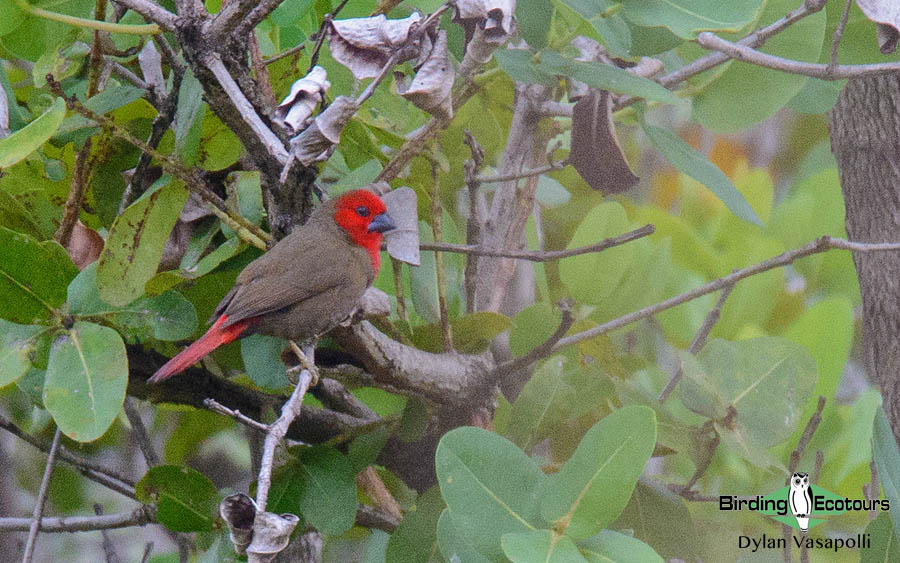
Days 13. Departure from Harare
The tour comes to an end after breakfast – where you can depart at your leisure. Please note that there are no activities scheduled for the day, however, should you have a late afternoon/evening departure from Harare, we will be able to assist in organizing activities for you.
Please note that the itinerary cannot be guaranteed as it is only a rough guide and can be changed (usually slightly) due to factors such as availability of accommodation, updated information on the state of accommodation, roads, or birding sites, the discretion of the guides and other factors. In addition, we sometimes have to use a different international guide from the one advertised due to tour scheduling.
Download Itinerary